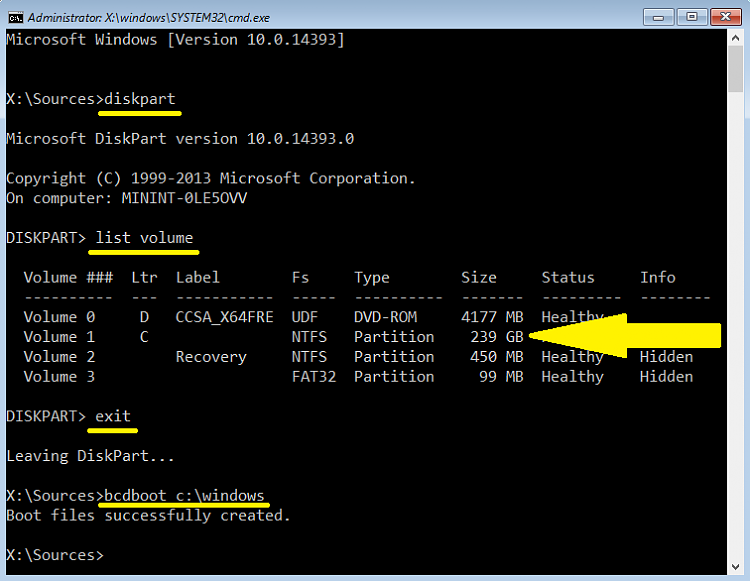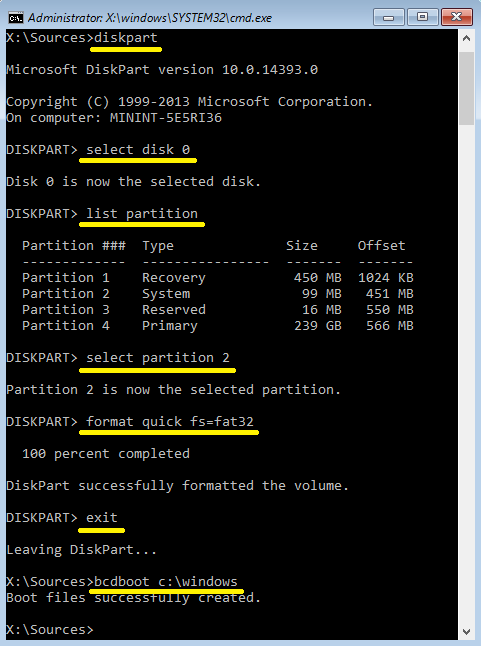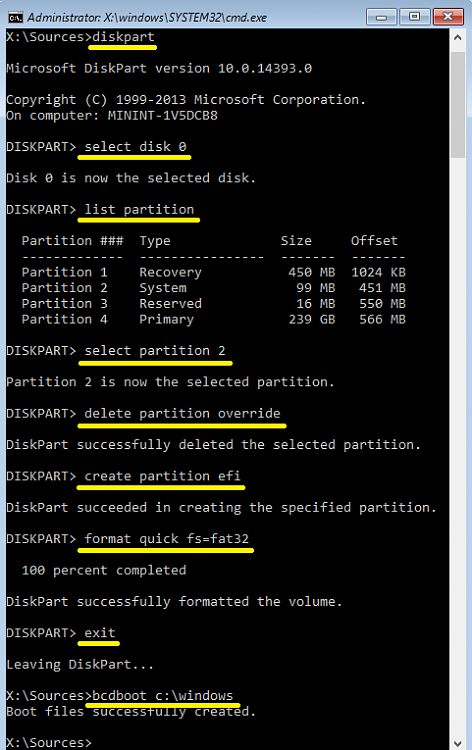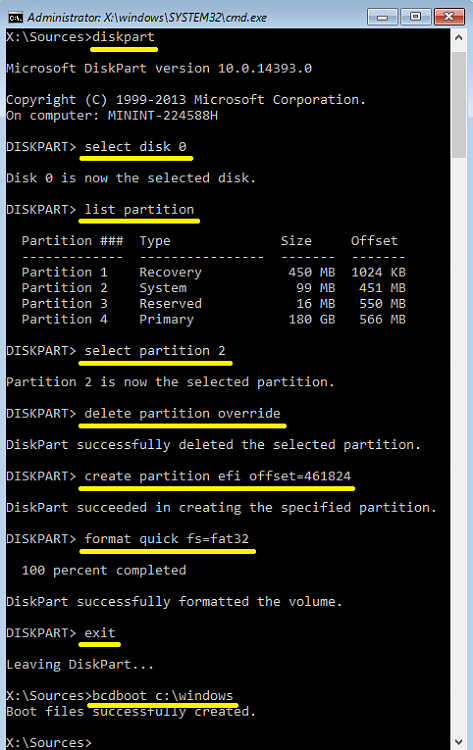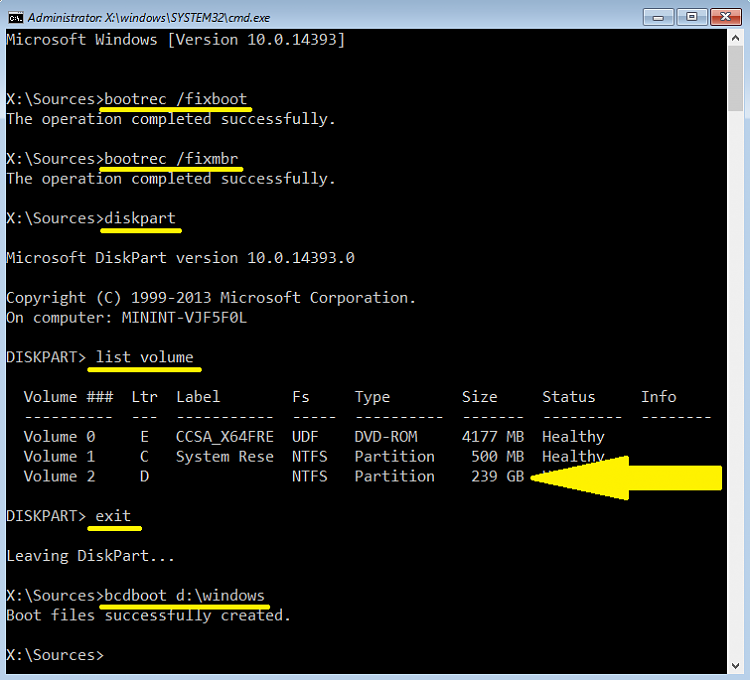How to create an Extensible Firmware Interface (EFI) system partition on a GUID Partition Table (GPT) disk.
create partition efi [size=<n>] [offset=<n>]
size=<n> The size of the partition in megabytes (MB). If no size is given, the partition continues until there is no more free space in the current region.
offset=<n> The offset in kilobytes (KB), at which the partition is created. If no offset is given, the partition is placed in the first disk extent that is large enough to hold it.
Examples:
create partition efi
create partition efi size=100
create partition efi size=260 (for "Advanced Format 4Kn" drives)
UEFI/GPT-based hard drive partitions

 Quote
Quote
